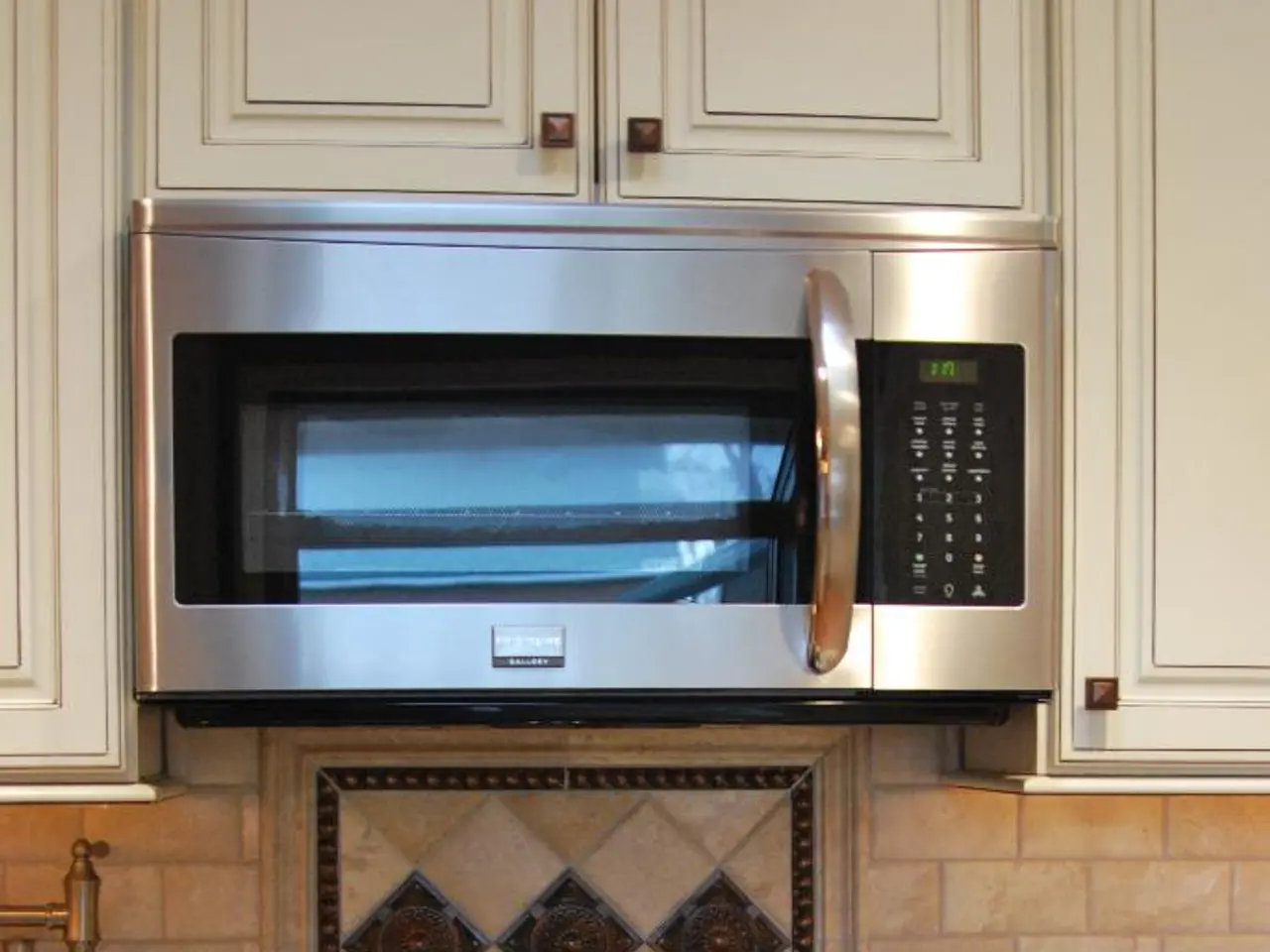Enhancing Soil For Maximum Plant Growth: Premature Soil Treatments
Sterilizing soil is an essential step in gardening to ensure a healthy environment for plants to grow. There are several methods available, each with its own advantages and effectiveness.
Oven Sterilization
For those with an oven at their disposal, oven sterilization can be a convenient option. Spread your soil in a thin layer on an oven-safe tray, and heat it at 180–200°C (350–400°F) for about 30 minutes. Ensure the soil temperature reaches and holds around 80–100°C for at least 30 minutes to kill most pathogens and weed seeds. Avoid overheating or burning the soil, as this destroys beneficial properties.
Microwave Sterilization
Microwave sterilization is another quick alternative if you have the appropriate equipment. Place your moist soil in a microwave-safe container without a sealed lid to allow steam escape. Heat it on high power for 3–5 minutes per kilogram of soil (adjust time based on microwave wattage). Check the soil temperature, aiming for 80–90°C to effectively sterilize. Let it cool before use.
Steam Sterilization (Steaming)
Steam sterilization, or steaming, is a method that kills many pathogens, nematodes, and weed seeds without releasing toxic compounds. Put your soil in a heatproof container placed inside a larger pot with boiling water beneath but not touching the soil. Cover it with a lid to trap steam. Steam the soil for 30 minutes to one hour.
Boiling Water
Boiling water is a rapid way to kill surface pathogens, but it may not sterilize deep soil layers evenly. Pour boiling water directly onto the soil, soaking it thoroughly. Allow the soil to dry before planting.
Solarization (Sun Heating)
Solarization is an environmentally friendly method that raises soil temperatures to 45–60°C, reducing pathogens and weed seeds gradually. Spread your moist soil in a thin layer or bed, cover it with clear plastic sheeting to trap solar heat, and leave it under direct sunlight for 4–6 weeks during the hottest months of the year.
Other Alternative Methods
Industrial methods such as gamma irradiation and autoclaving are more efficient but less accessible for home use. Chemical sterilants exist but are generally avoided due to environmental and health risks.
When it comes to gardening, preparation is key. Allow the soil to cool completely before planting any cuttings, seedlings, or plants. If you don't want to use boiling water, you can opt for freezing the soil in a plastic bag. Mow the sod regularly, but not too short, to encourage healthy growth. Sod can be a good option for repairing damaged lawns or creating new ones quickly.
It is important to properly care for the sod after it has been laid to ensure it establishes roots and grows well. Water the sod thoroughly after it has been laid, and avoid walking on it for the first few weeks to prevent damage. Fertilizing the sod regularly can help it stay healthy and green. Choose high-quality topsoil that is free of weeds, disease, and pests.
Remember, each method varies in convenience, cost, and thoroughness. Steam and oven sterilization are common for home gardeners due to their balance of effectiveness and safety. Solarization is environmentally friendly but slow. Microwave sterilization is a quick alternative if appropriate equipment is available.
Sources: [1] University of California Agriculture and Natural Resources. (n.d.). Soil Solarization. Retrieved from https://www.ipm.ucanr.edu/PMG/r777000811.html [2] University of Wisconsin-Madison Extension. (2016). Soil Solarization. Retrieved from https://learningstore.uwex.edu/Assets/pdfs/A3185.pdf [3] Cornell University. (n.d.). Soil Solarization: A Method of Soil Sterilization. Retrieved from https://extension.cornell.edu/crops/soil-solarization-method-soil-sterilization [4] University of Maryland Extension. (n.d.). Soil Solarization. Retrieved from https://extension.umd.edu/hgic/soil-solarization
When tending to the home-and-garden, considering a healthy lifestyle for your plants involves sterilizing the soil. This can be achieved through various methods such as the oven sterilization, microwave sterilization, steam sterilization, boiling water, solarization, or industrial methods like gamma irradiation and autoclaving. For one's household gardening needs, steam and oven sterilization are frequently preferred for their balance of effectiveness, convenience, and safety.




